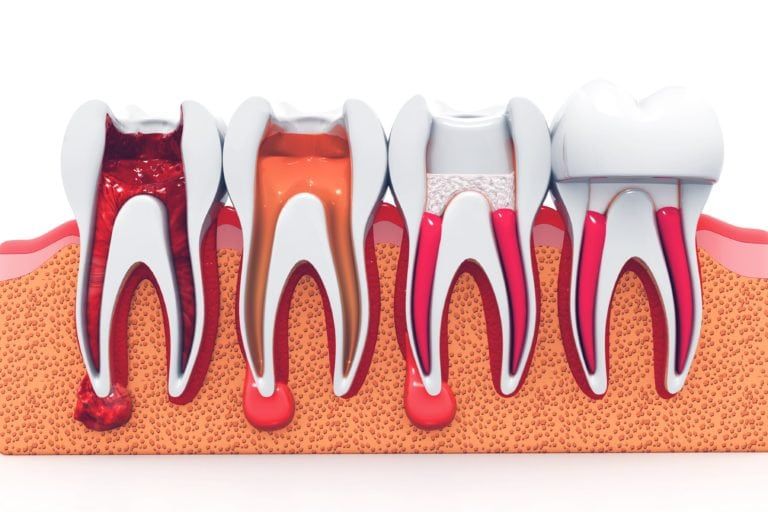What is a Root Canal?

Two words are capable of striking fear in any dental patient—root canal. The anticipated pain of the procedure and being misinformed about the subject is often the source of dread for many patients. However, excruciatingly painful dental procedures are now a thing of the past. With numerous advancements made in the dental industry and anesthetics today, there is no need to be overly concerned about an upcoming root canal. If anything, a root canal will actually help relieve pain when performed, treating a diseased tooth rather than removing it altogether.
Who needs a root canal?
Underneath the enamel, the outer most layer of the tooth, is a layer of dentin, and beneath that, is tissue, otherwise known as pulp. This pulp plays a vital role in the development of a tooth, containing nerves, blood vessels, and connective tissues—beginning at the crown, which is the visible portion of the tooth, and ending at the jaw. Unfortunately, a damaged tooth, which contains a severe cavity or crack, can lead to an infection within the pulp, causing bacterial growth within this soft tissue. If you have a swollen neck, face, and/or gums, a relentless toothache, sensitivity, or if you notice a hole in one of your teeth, you may be in need of a root canal and should consult your dentist. Ignoring the symptoms of a decayed tooth and infected pulp may result in bone loss, pulp death, a tooth abscess, or losing the tooth, which is why it is important to promptly seek dental treatment.
The Root Canal Process
A dentist will perform the root canal, completing the procedure in two visits unless complications with the decayed tooth arise. Before the procedure is performed the dentist will take X-Rays to determine how extensive the damage of the decayed or diseased tooth is. The patient is given a local anesthetic for pain management, and a dental dam, a sheet with a rubber-like consistency, is used to protect the infected tooth from saliva during the procedure. By creating a small hole in the crown of the tooth, the dentist is able to reach and remove the infected portions of the pulp with dental instruments.
The dentist will then flush out the pulp chamber and root canals, cleaning the area after removing the infected pulp. At times, the dentist may opt to place medication into the pulp chamber or root canals to rule out any residual infection. The treated area needs to be dried before the procedure can be completed. Therefore, the pulp chamber and root canals will be left open for several days to ensure that they have drained properly. Patients may receive a temporary filling to protect the tooth and should avoid chewing until the end of their treatment.
After the area dries, the dentist will then remove the temporary crown and fill in the empty pulp chamber, root canals, and tooth—a process that doesn’t even require a local anesthetic, so there is nothing to fear about your upcoming root canal! Schedule an appointment with Dr. John Batlle at Southwest Family Dentistry today!

